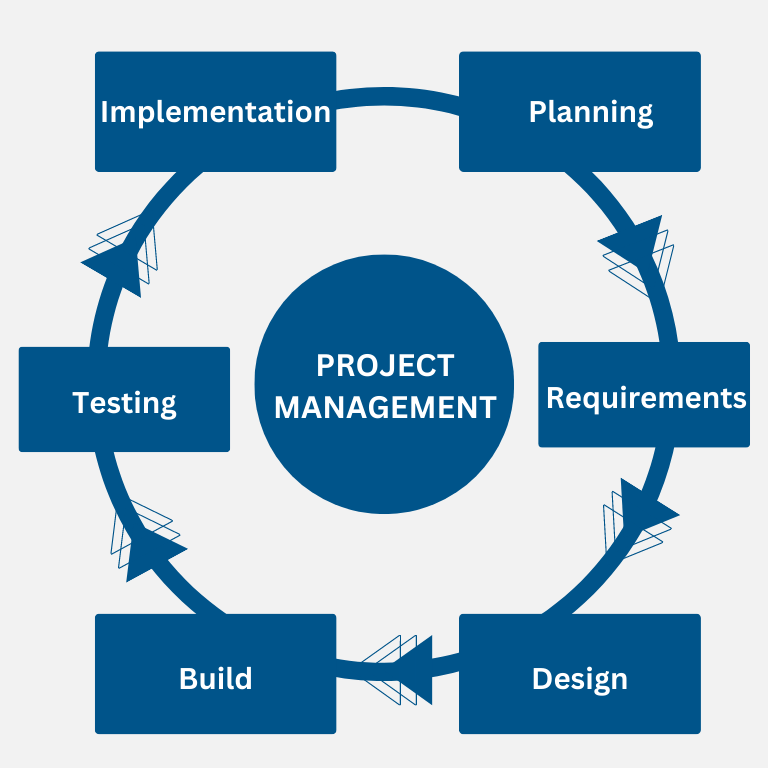» ENSURING A PROJECT’S SUCCESS
Project management
Project management is key to ensuring a product is completed on time and within budget. In terms of software development, project management refers to the planning, scheduling and organisation of a software development project.
There are a number of risks and challenges involved in developing a piece of software – changes in technology, scope creep, staff turnover, bugs and errors in code, etc. One of the purposes of project management is to account for these and mitigate them, and ultimately ensure that the project succeeds.
Project management also ensures that the stakeholders know the plan, the budget, and the timeframe for the project. This helps prevent the project from exceeding its budget or deadline.

What are the steps involved in project management?
There are a few different methodologies for managing projects, with the two most popular being the Agile and Waterfall approaches.
Terminologies vary between methodologies, but these six steps are the most common designations for the major phases in software development:
Project management roles
There are a number of important roles within any project team. In large organisations, these may be split into junior and senior roles, and in smaller organisations there may be one person performing more than one role.
Contact Netgen for your next software, app or website project
Take a look at some of the solutions we’ve created for our clients and get in touch to find out what we can do for you

